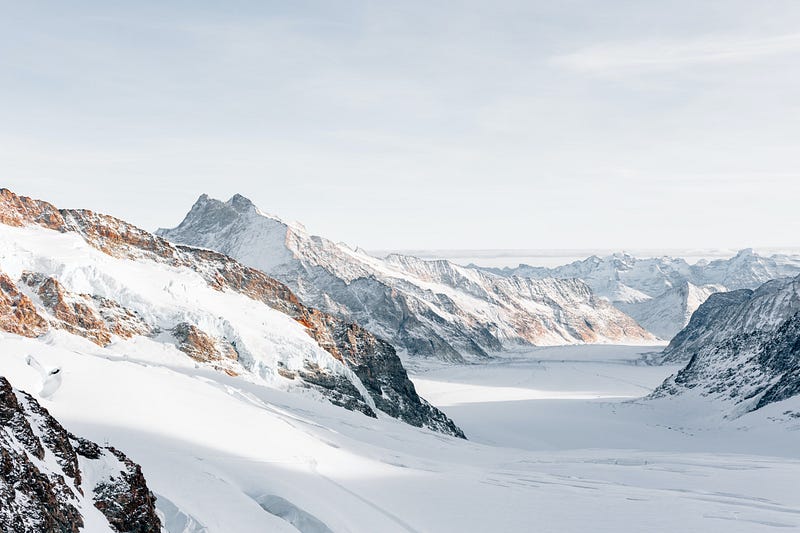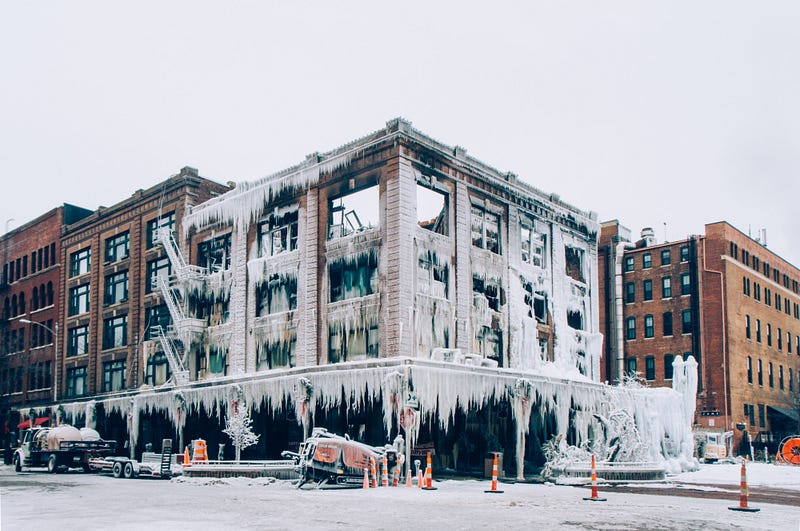Understanding the Dual Threats of Climate: Extreme Cold and Warming
Written on
Chapter 1: The Reality of Extreme Cold
The phenomenon of extreme cold is often overshadowed by discussions of global warming. However, it is crucial to recognize that what we are witnessing is better described as "climate disruption." This term encompasses the increased frequency of both hot and cold weather events, making it essential to understand these occurrences for effective preparation.
Extreme Cold: More Than Just Low Temperatures
According to the World Health Organization (WHO), approximately 2.5 million individuals perish annually due to the effects of extreme cold. This term does not merely refer to low temperatures but instead denotes conditions that fall significantly below regional seasonal averages. While many areas experience negative temperatures during winter, "Extreme Cold" signifies dangerously low temperatures that threaten ecosystems, infrastructure, and human lives. Such severe weather often arises from the movement of polar air masses to lower latitudes, influenced by factors like Arctic oscillations or disrupted Jet Streams.

To delve deeper into this topic, check out the following video:
Chapter 2: Myths Surrounding Climate Change
One common myth is that "Global Warming will eliminate cold spells," which is misleading. While the planet is generally warming, it does not preclude the occurrence of extreme cold events. Some experts suggest that warming in the Arctic may lead to unpredictable shifts in the jet stream, resulting in cold spells in areas that are not typically affected.
Another misconception is that "Extreme cold negates climate change science." This confusion stems from conflating "weather," which represents short-term conditions, with "climate," which refers to long-term averages. Cold spells are instances of weather, whereas global warming reflects a broader climate trend.

Main Risks Associated with Extreme Cold
In regions like Russia, temperature variations can exceed 50°C between winter and summer. The ecosystem is particularly vulnerable, as many non-migrating animals may face food shortages or even death due to freezing temperatures. Such mortality disrupts the food chain, affecting both predators and prey. In aquatic settings, freezing water bodies threaten wildlife by limiting food access and reducing habitats.
Infrastructure also faces severe challenges from extreme cold. Water pipes can freeze and burst, resulting in flooding and loss of potable water for households and businesses. Additionally, electrical grids may experience failures due to the combined strain of freezing temperatures and heightened heating demands. Transportation systems are not immune either; snow and ice can cause closures, delays, and accidents. Buildings may suffer structural damage from accumulated snow or ice, and cycles of freezing and thawing can compromise their integrity.

Innovative Solutions for Coping with Extreme Cold
The primary approach to addressing this issue is to mitigate climate disruption and strive for a return to seasonal norms. However, some innovative solutions are already being implemented in construction and infrastructure to withstand extreme conditions:
- Anti-Icing Technologies for Roads: Techniques such as geothermal heating and self-deicing materials help prevent ice formation.
- Advanced Building Insulation: Insulating materials are utilized to retain heat within buildings and lower energy needs.
- Smart Grids: Electrical grids are adapted to efficiently manage increased demand during cold spells to avoid outages.
- Insulated and Self-Regulating Piping: Advanced materials are employed to prevent pipe freezing and technologies that actively heat pipes in extreme cold.

Final Thoughts
Despite the prevalent focus on global warming, extreme cold events are a significant concern. These occurrences are not merely about low temperatures; they represent critical drops below regional seasonal norms, often driven by shifting polar air masses. While global warming signifies long-term climate trends, abrupt cold spells are short-term weather events that endanger ecosystems and infrastructures.
It is vital to differentiate between these phenomena and implement innovative strategies, such as enhanced insulation and anti-icing technologies, to address these challenges effectively. What are the typical low temperatures in your region? Mine range from -2°C to 5°C.
Thank you for engaging with my work! I look forward to sharing more insights in the future.
The links above are not affiliated. For related articles, consider reading about the silent crisis of a parched Earth or the world's fastest atmospheric winds.
The second video worth watching is titled "Not-Normal Record-Setting Heat is Killing Many People: Could Chill Suits (Cooling Suits) Mitigate?" This video discusses the impact of extreme heat and potential solutions.